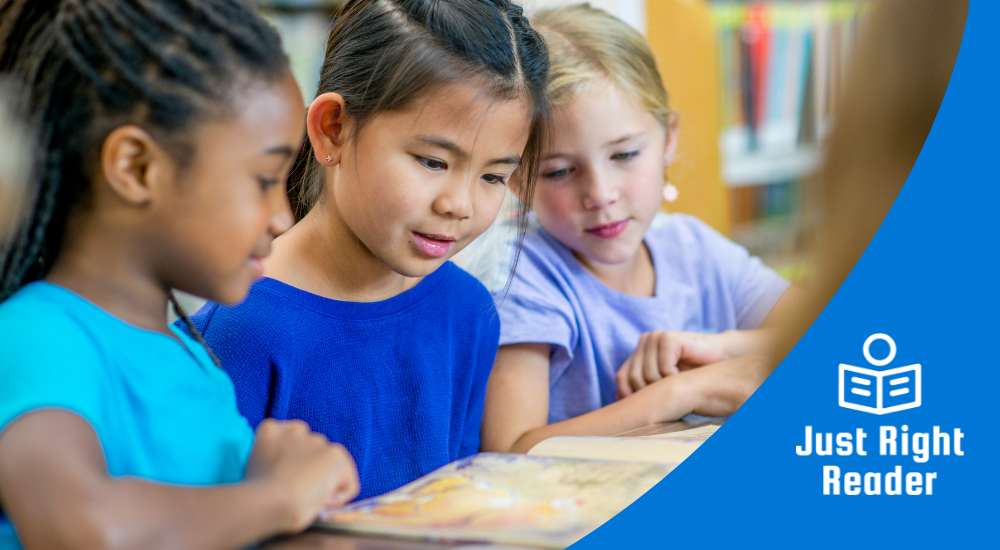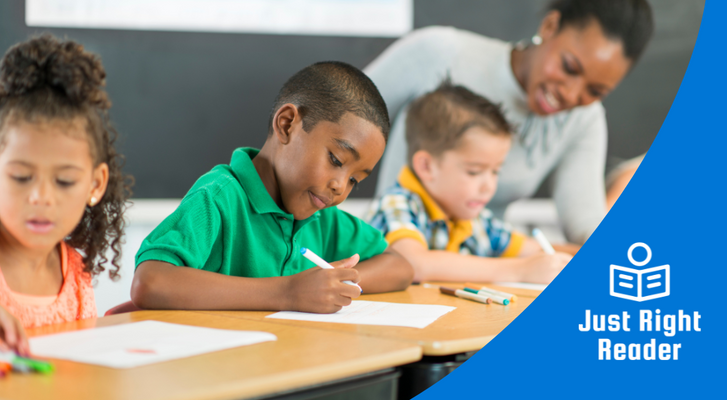
Vocabulary knowledge is crucial for becoming a proficient reader. As educators, understanding how to deliver vocabulary instruction effectively can dramatically enhance our students' learning experiences.
Discover effective strategies for teaching vocabulary and learn how Just Right Reader decodables can help.
Why Vocabulary Instruction Matters
The National Reading Panel recognizes vocabulary as one of the five essential pillars of reading instruction. A strong vocabulary is fundamental to understanding the meaning of text.

Effective vocabulary instruction helps students:
-
Improve Reading Comprehension: Knowing more words aids in understanding text better.
-
Enhance Communication Skills: A robust vocabulary improves all areas of communication, including writing, speaking, and listening.
- Boost Academic Success: Vocabulary knowledge is a critical predictor of academic achievement across the curriculum (Beck, McKeown, & Kucan, 2002).
Effective vocabulary instruction is particularly crucial for English Language Learners and students in bilingual programs. It bridges language gaps and accelerates their comprehension and fluency in their native language and English.
Vocabulary's Role in Scarborough's Reading Rope
Scarborough's Reading Rope is a well-known model illustrating the many components necessary for skilled reading.
Vocabulary is one of the essential strands in this rope, specifically within the language comprehension side of the model.

Where does vocabulary fit in the Reading Rope?
-
Essential for Understanding Language: Vocabulary is key for understanding language, which is half of Scarborough's model. Language comprehension is necessary for making sense of what you read and for expressing ideas clearly.
-
Connected with Other Skills: Vocabulary growth is linked with other areas such as background knowledge and language structure. Improving vocabulary helps students better understand implied meanings, make predictions, and think critically about texts.
- Supports Fluent Reading: While it boosts comprehension skills, a strong vocabulary also makes reading more fluent. Knowing more words means you can recognize and understand them faster, making reading smoother and more enjoyable.
Effective Strategies for Vocabulary Instruction
Implementing vocabulary strategies is critical to helping students expand their word knowledge. Here are effective methods to enhance vocabulary learning in your classroom:
Direct Instruction
- Explicit Teaching: Introduce new vocabulary in a well-planned, deliberate way with clear definitions and examples.
- Word Lists: Utilize curated lists based on grade level and subject matter to systematically expand vocabulary.
Engaging Activities
- Graphic Organizer: Use graphic organizers like word maps or Frayer Models to explore word meanings, synonyms, antonyms, and usage in context.
- Interactive Games: Incorporate vocabulary games that make learning new words fun and memorable.
Repeated Exposure
- Multiple Contexts: Present new vocabulary across different subjects and settings to reinforce word meanings.
- Cumulative Learning:Regularly spiral back to previously taught vocabulary to deepen understanding and retention.
6 Vocabulary Activities for the Classroom
There are many activities you can do to make vocabulary instruction dynamic and effective.
 Here are a few to get started:
Here are a few to get started:
-
Vocabulary Journals: Encourage students to keep personal vocabulary journals where they can collect new words and expressions.
-
Story Creation: Have students use new vocabulary words to create stories or illustrations, which helps contextualize word meanings.
-
Role-Playing: Students can act out definitions or use new vocabulary in structured role-plays, enhancing understanding and usage.
-
Word Association Games: Create a fun, interactive game where students connect new vocabulary words with words they already know. This could involve matching synonyms and antonyms or placing words into thematic categories. Such games help students understand relationships between words and expand their semantic networks.
-
Word-of-the-Day or Week: Introduce a 'Word of the Day or Week' program. Encourage students to use this word in different contexts and sentences throughout the day or week. Discussing how the word was used helps to reinforce its meaning and usage.
- Vocabulary Parades: Organize a vocabulary parade, where students dress up as a vocabulary word and explain its meaning and usage to their peers. This creative activity makes learning memorable and allows students to engage deeply with their words, thinking about how best to embody and explain them.
Encouraging Parental Involvement in Vocabulary Development
Parental involvement is essential for reinforcing vocabulary development outside the classroom. Encouraging parents to engage in vocabulary-rich interactions can significantly boost children's language skills:

-
Daily Conversations: Encourage parents to use new and varied vocabulary during everyday conversations and activities (Sénéchal & LeFevre, 2002).
-
Reading Together:Recommend parents read books with their children that include challenging vocabulary, and discuss the meanings of new words in the context of the story and beyond.
-
Interactive Word Games: Suggest playing word games at home, such as Scrabble, Boggle, or word matching games. Games make learning new vocabulary fun and engaging.
Read our blog post, Tips to Promote Reading At Home, for tips on communicating the importance of reading at home.
Just Right Reader Decodables Support Vocabulary Development
 In addition to offering targeted phonics practice, Just Right Reader Decodables are also a valuable resource for enhancing vocabulary development through authentic reading experiences.
In addition to offering targeted phonics practice, Just Right Reader Decodables are also a valuable resource for enhancing vocabulary development through authentic reading experiences.
Students are introduced to new vocabulary words in every decodable!
With engaging Classroom Libraries and Take-Everywhere Decodable Packs, students have many opportunities to practice their decoding skills in an authentic reading experience, which allows them to become stronger readers.
 Our Take-Everywhere Decodable Packs Feature:
Our Take-Everywhere Decodable Packs Feature:
- Science of Reading decodables personalized for each student based on district reading assessment data.
- Writing pages to reinforce decoding and writing skills.
- Evidence-based activities that motivate students to read and keep reading.
- QR codes to access fun video phonics lessons in English and Spanish to support students and families reading at home.
- Backpacks for students to take their reading everywhere.
- Packs wrapped in colorful wrapping paper to provide a joyful literacy experience.
References
Beck, I. L., McKeown, M. G., & Kucan, L. (2013). Bringing Words to Life, Second Edition: Robust Vocabulary Instruction. Guilford Press.
Sénéchal, M., & LeFevre, J. A. (2002). Parental involvement in the development of children’s reading skill: A five-year longitudinal study.Child Development, 73(2), 445-460.



















